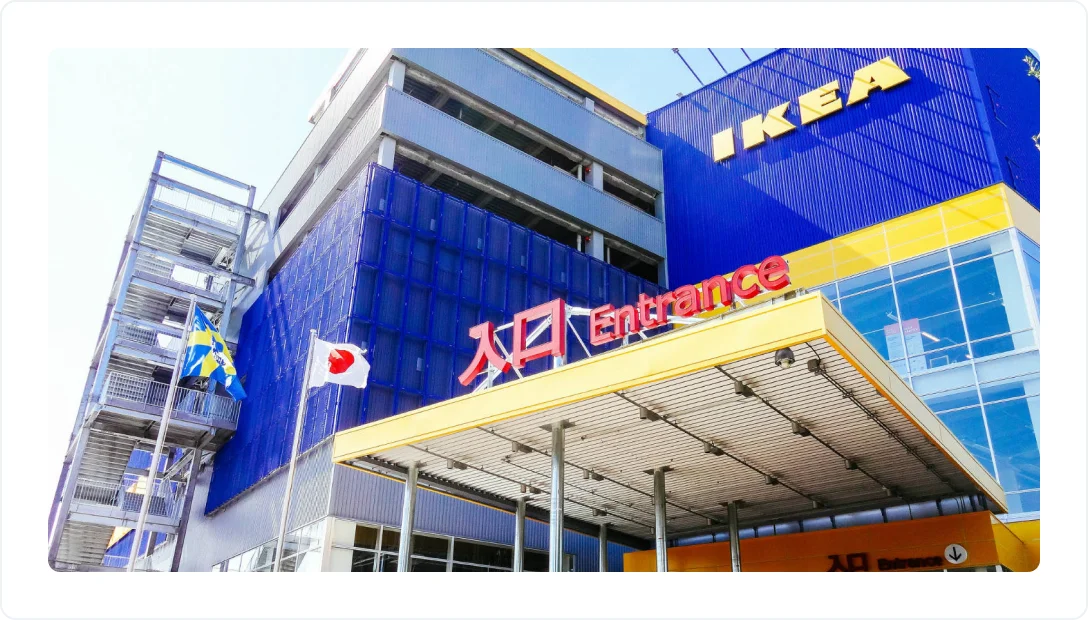What Is a Transnational Strategy? A Simple (But Complete) Guide
Tired of being a big fish in a small pond? Go beyond your domestic market and start conquering the world. But before you spring into action, take a moment to choose your global expansion strategy.
Transnational strategy, as the most balanced of them all, might be just what you need. Let’s examine the pros and cons of this strategy and explore how your business might benefit from adopting it.
What is a transnational strategy?
Transnational strategy is a centralized approach to global expansion where the head office retains strategic and operational control over international branches. These subsidiary branches tailor marketing and sales strategies to local preferences. Thus, the transnational strategy combines the efficiency of scale economies with the flexibility of local responsiveness.
To better understand the specifics of transnational strategy, let’s examine it in the context of other global expansion strategies.
Transnational vs multi-domestic vs global vs international strategy
When considering business expansion, you can go for the transnational, multi-domestic, global, or international strategy. All four are characterized by different degrees of local responsiveness and global integration.

Multi-domestic strategy
Multi-domestic strategy involves tailoring products and marketing strategies to suit the preferences and needs of local markets. It is characterized by:
- highest local responsiveness
- decentralization
- flexibility and adaptation to varying market conditions
Companies choose this strategy to cater to consumer tastes in markets where local customization is essential. This strategy also successfully tackles significant cultural differences and regulatory requirements. Companies known for their multi-domestic approach include:
- Procter & Gamble
- Nestlé
- Netflix
Global strategy
Global strategy involves standardizing products and marketing strategies across all markets, focusing on scale and efficiency. Its key characteristics are:
- centralized decision-making
- standardized products
- uniform brand image worldwide
Brands choose this strategy to leverage global brand recognition, streamline operations, and lower costs through mass production. Brands known for their universal recognizability and high standardization include:
- Coca-Cola
- H&M
- Uber
Transnational strategy
The transnational strategy integrates elements of both multi-domestic and global strategies, balancing global integration with local responsiveness. It is characterized by:
- combination of centralized coordination and local adaptation
- coordination and cooperation of local branches
- sharing knowledge and innovation across global operations
Brands choose this strategy to achieve efficiency through global integration while remaining responsive to local market needs and preferences. Companies known for their balance between standardization and customization include:
- Samsung
- Toyota
- Unilever
International strategy
The international strategy involves limited involvement in foreign markets, typically through exports or licensing agreements, without significant customization. Its key characteristics are:
- limited adaptation to local markets
- reliance on exports or licensing
- minimal investment in foreign operations
This approach is favored by small to medium-sized enterprises (SMEs) or companies with niche offerings. It allows to minimize risks while still benefiting from expansion and entering foreign markets cautiously. Examples of brands with international strategy include:
- Etsy
- Ben & Jerry’s
- Moleskine
Advantages of the transnational strategy
If you adopt the transnational business strategy, expect these benefits:
- Balanced approach: Transnational strategy is a golden medium between global integration and local responsiveness, balancing lower costs with customer satisfaction.
- Local efficiency: Local employees know their culture inside out and are better placed to make decisions about products, services, or marketing approaches than an outsider team.
Pro tip: Let your local branches localize marketing content. To orchestrate the localization process, use a localization management solution, Centus.
- Innovation and adaptability: By fostering knowledge sharing across global operations, transnational strategy allows your business to respond quickly to changes in market conditions and customer preferences.
- Risk diversification: Spreading operations across multiple regions mitigates risks associated with economic, political, and regulatory changes in any single market.
- Brand consistency: despite some adaptation for local markets, this strategy allows companies to maintain a globally recognizable uniform brand image.
In many ways, transnational strategy allows brands to take the best of both worlds, thriving in a sweet spot of flexibility and global reach. Yet it’s not completely free of flaws.
Disadvantages of the transnational strategy
Consider these downsides of a transnational strategy before adopting it as your approach to global expansion:
- Coordination challenges: Balancing global integration with adaptability requires complex coordination at many levels, potentially straining resources and limiting your brand’s agility.
- Supply chain disruptions: Transnational brands require robust global supply chains that are susceptible to disruptions like pandemics, natural disasters, or geopolitical instabilities.
- Brand dilution: Although transnational strategy allows for keeping brand uniformity, local variations might lead to inconsistency and brand erosion.
Pro tip: To maintain brand uniformity, learn how to adopt a consistent localization strategy.
- Competitive pressure: To maintain your market position, your brand needs to innovate. However, the emphasis on brand consistency can limit the extent to which the brand can adapt to a dynamically changing market.
These hurdles are not unsurmountable. If you plan to compensate for them, the transnational strategy offers brilliant opportunities for global growth and success.
Transnational strategy approaches
Based on your goals, available resources, and market conditions, you might take one of these approaches to the transnational strategy:
- Integrated network approach focuses on creating an integrated network of operations with knowledge, resources, and best practices shared across different regions. Example: Toyota.
- Regional focus approach prioritizes select regions for deeper customization, recognizing diversity and allowing for tailored strategies tackling cultural, economic, and regulatory differences. Example: Unilever.
- Product-driven approach prioritizes standardization for core products while allowing for localization in marketing, distribution, and customer service. Example: Apple.
- Customer-centric approach prioritizes meeting the needs of local customers. This approach is characterized by deep market segmentation, research, and customization based on customer preferences. Example: Starbucks.
- Agile and flexible approach allows for rapid adaptation to changing market conditions and emerging opportunities, emphasizing continuous learning, experimentation, and innovation. Example: Amazon.
You can also combine several transnational strategy approaches to create a hybrid strategy that best suits current industry dynamics, competitive landscape, your company’s unique capabilities, and business objectives.
Does the transnational strategy suit your business?
How to decide whether your product is better off as a beacon of stability or as a hero with a thousand faces—one for each new local market? There is no standardized solution. Yet it doesn’t have to be a gamble! Here are the things to consider:
Policies and regulations
Local political and legal conditions shape the business landscape. Before you decide on a strategy, you should research:
- trade barriers
- taxation policies
- intellectual property laws
- labor regulations
- compliance standards
For example, cosmetic products and foods might need reformulation to comply with local health and safety standards, so a high standardization strategy won’t suit you.
Economic conditions
Local economic factors influence the market’s attractiveness for business. Yet they also inform expansion strategy. Make sure to research:
- state of the labor market
- consumer purchasing power
- exchange rates
- currency stability
For example, a household-name clothing brand might be less affordable to local customers, so it makes sense to overhaul its image and market it as more luxurious.
Cultural factors
Doing your homework on local culture is mandatory. Make sure to study:
- local customs
- social norms
- communication styles
- religious practices
- linguistic barriers
- consumer preferences
For example, some ingredients can be culturally unacceptable (beef for Hindu followers or pork for Muslims), so the entire menu of the restaurant chain should be reinvented for new markets.
Existing market
Assessing your company’s existing market position and resources is vital too. Study closely:
- market share
- brand reputation
- competitive advantage
- distribution networks
- competitor’s supply
- untapped demand
For example, your target market is already saturated with domestic brands, but your resources allow for developing a new line of products to address untapped customer needs. In that case, a more responsive strategy will open up more opportunities than a rigid global approach.
Sounds daunting? Don’t worry! Your strategy doesn’t have to be set in stone. As your business grows and expands to new markets, the strategy might shift more towards unification or local responsiveness.
For example, Microsoft started with a highly unified global approach but later embraced more flexibility, shifting into a transnational strategy. To continue winning new markets, they had to become more responsive—and so can you!
Examples of companies with a transnational model
Here are five examples of companies that have used transnational strategies to expand their global reach:
McDonald’s and KFC
 Source: McDonald's
Source: McDonald's
The fast-food behemoths McDonald’s and KFC are textbook examples of transnational companies. They largely have the same brand names, logos, and core menu items all over the world, but cater to local tastes by adjusting portion sizes and adding native food staples to menus.
For example, McDonald’s has a range of vegetarian options in India, wine in France, and Setouchi sauce in Japan, while KFC offers Yakiniku bento boxes in Indonesia, nacho boxes in Australia, and porridge in China, Singapore, and Malaysia.
Apple and Microsoft
 Source: CNBC
Source: CNBC
Apple and Microsoft are classic transnational companies examples. Both corporations maintain consistent images and offer standardized products. However, they show responsiveness in product adaptation, such as various language settings, region-specific default apps on their devices, and respect for local laws and regulations on data collection and privacy.
Unilever
 Source: Unilever
Source: Unilever
The parent company to hundreds of household brands like Dove, Sunsilk, Lipton Tea, and Knorr is another illustrative example of a transnational corporation that keeps centralized operations while organizing localized production and management. Unilever focuses on products that perform well in each geo (like Marmite in Australia and mayonnaise in the US) and occasionally rebrands its products (Omo as Persil, Axe as Lynx, etc.) to appeal to local customers.
Nike
 Source: Nike
Source: Nike
The sportswear giant with HQ in the US operating in over 170 counties is an example of a transnational corporation that keeps products, brand image, and quality consistent but is flexible with marketing and distribution channels. Their strategy includes localized social media campaigns, influencer collaborations, and sponsorships for hand-picked local athletes.
IKEA
 Source: Gloture
Source: Gloture
The global furniture and homeware retailer is a more subtle example of the transnational strategy adopted later to overcome hurdles in local markets.
IKEA keeps consistent brand identity, product naming, and store layouts, but it sources materials and manufacturers locally to minimize costs. IKEA also often modifies Swedish product names to make them more pronounceable or meaningful in local languages and adjusts its assortment to include items that are more popular among local customers.
Get the week's best content!
By subscribing, you are agreeing to have your personal information managed in accordance with the terms of Centus Privacy Policy ->
Keep learning
7 min. read
What Is Market Expansion Strategy? A Guide to Business Growth
13 min. read
Best Internal Growth Examples + 8 Expert Strategies
6 min. read
Internationalization and Globalization: What’s the Difference Between?
7 min. read
What is Global Localization: Principles & Strategy
11 min. read